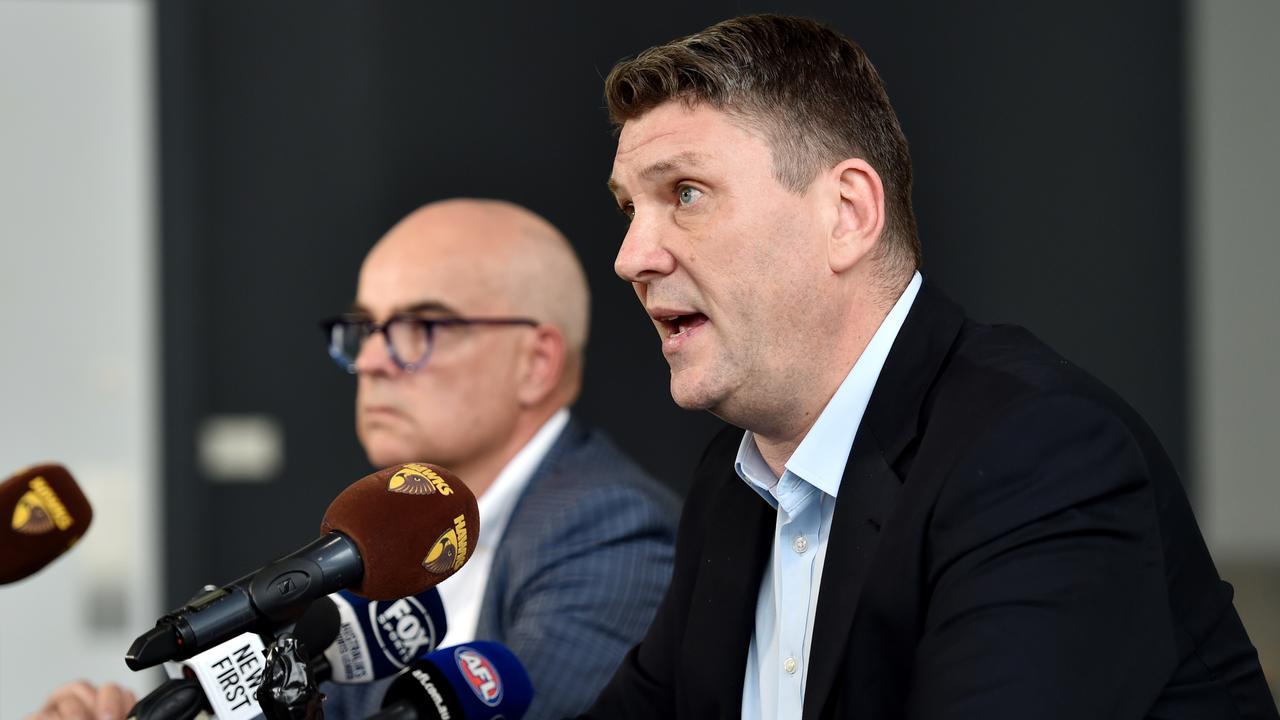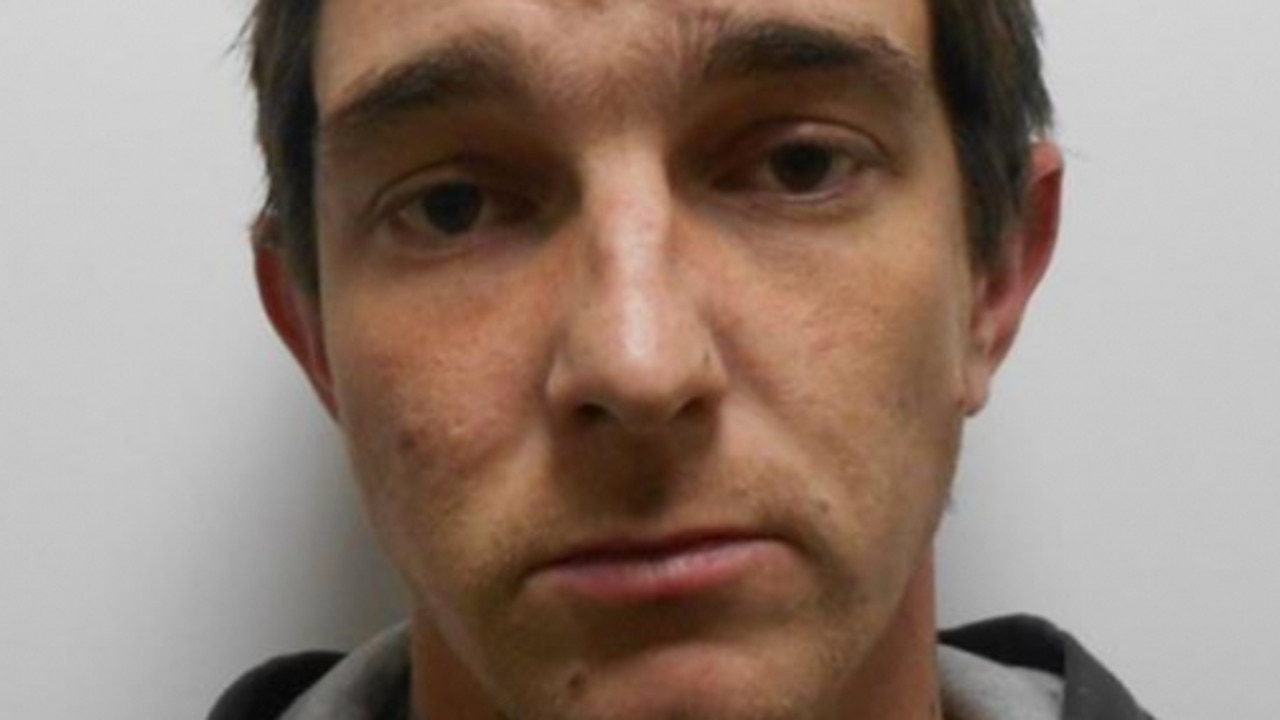New report reveals critical detail in what caused fatal helicopter crash at Sea World
One of the survivors of the Sea World helicopter tragedy says a new report has not given her the answers to the crash that left her son seriously injured and four others dead.
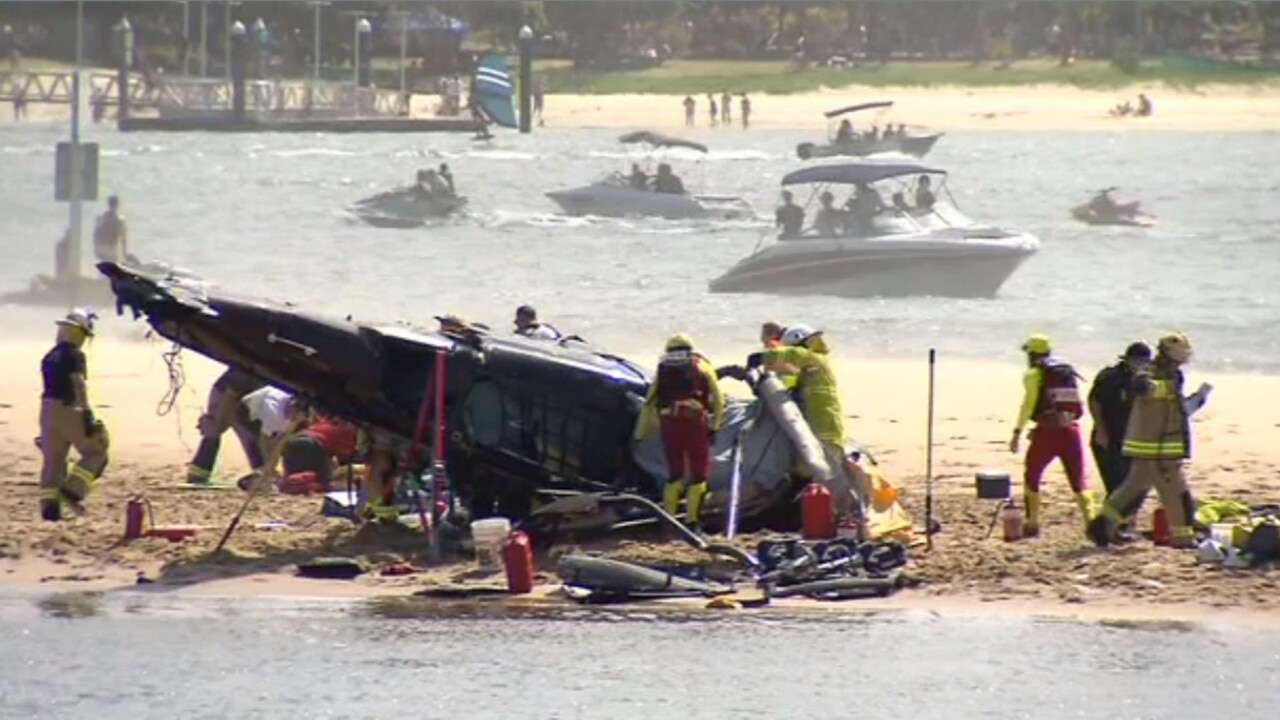
NewsWire
Don't miss out on the headlines from NewsWire. Followed categories will be added to My News.
Early findings into the cause of the deadly Sea World helicopter crash have been revealed, with a damning new report giving survivors and victims’ families some answers as to what went wrong.
The Australian Transport Safety Bureau released details of the preliminary investigation into the cause of the crash on Tuesday, which looked into exactly how the two choppers collided mid-air over the Gold Coast’s Broadwater on a perfectly clear day on January 2.
Chief commissioner of ATSB Angus Mitchell said the pilot of the helicopter coming into land did not recall a taxi call to announce his intention to take off from the other pilot over the radio.
“This does not necessarily mean that a taxi call was not made, and the ATSB investigation will undertake a detailed analysis of the nature of the radio calls made,” Mr Mitchell noted.
He explained the preliminary report outlines what occurred, including the sequence of events preceding the collision, but that investigators were yet to analyse “all the factors that potentially contributed to this tragedy”.
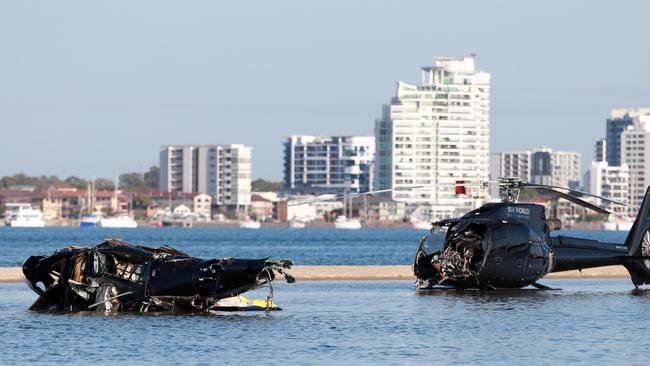
One of the survivors of the crash, Geelong woman Winnie de Silva, has read the report and agreed more information is needed.
“It didn’t really give me the answers I was looking for. It did just gave me highlights of what was happening,” Ms de Silva told Nine News.
“But the real answer is not yet out.”
Ms de Silva, who suffered broken legs and burns to her back, has been released from hospital. Her nine-year-old son Leon suffered a brain injury and has a long recovery ahead.
Sea World Helicopters chief pilot Ash Jenkinson, British tourists Ron and Diane Hughes and Sydney woman Vanessa Tadros were killed in the January 2 collision.
Ms Tadros’ 10-year-old son, Nicholas, was critically injured in the crash and is still in hospital.
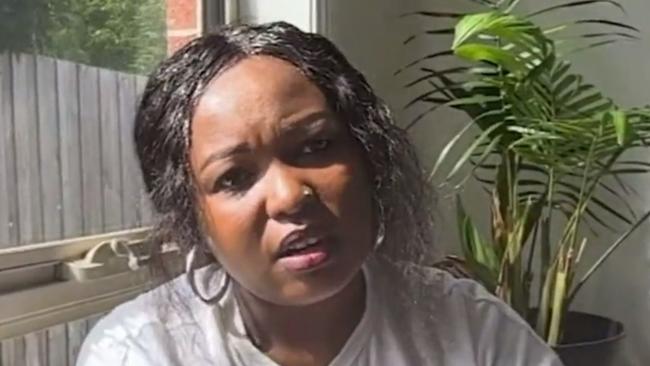
Mr Mitchell said the two EC130 Eurocopters were operating five-minute scenic flights from two different helipad facilities located about 220m apart.
“One from a pad within the theme park, and the other a pad to the south … adjacent to the park,” he said.
Multiple flights were due to follow the same “counterclockwise orbit” with one helicopter containing a pilot and five passengers about to land, while the second had one pilot and six passengers getting ready to depart.
The report revealed the inbound helicopter was set to land at the southern heliport while the outbound was leaving from the pad to the north.
The helicopters collided at a height of just under 130 feet and only 23 seconds after the departing helicopter left the ground.
Rotor blades from the outbound helicopter entered the forward cabin of the landing chopper, causing it to break apart in the air and fall into shallow water next to a sandbar, the report details.
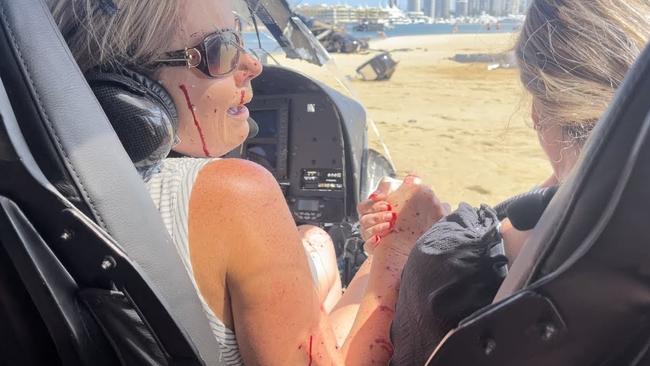
“The pilot and three passengers were fatally injured, and three passengers were seriously injured,” it says.
“The helicopter was destroyed.”
The outbound helicopter sustained “serious damage” to the front cabin and main rotor blades, but pilot Michael James managed to land on the sandbar after completing a 270 degree turn.
Radio calls were made by Mr James, who saw passengers boarding the second helicopter as it was preparing to depart but did not see the other helicopter take off.
Mr James told investigators he believed the departing helicopter would pass behind him.
“The pilot of the returning helicopter records that their assessment was the departing helicopter would pass behind them,” Mr Mitchell said.
“And he did not recall the pilot of the helicopter making a standard taxiing call, thereby announcing their intentions to depart. This does not necessarily mean that the taxiing call was not made.”
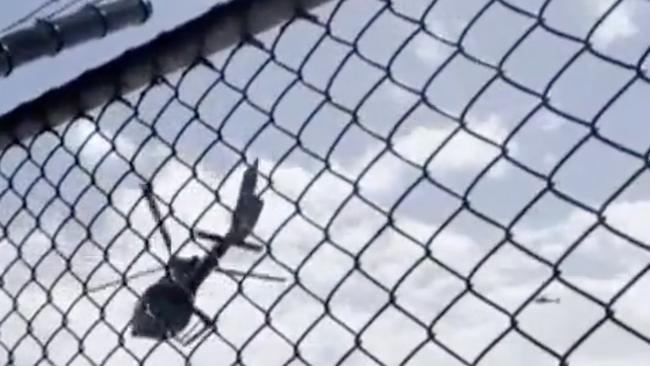
A pilot from a nearby operator told investigators he heard Mr James announce he would be landing, but did not hear any response from the other pilot.
However, the report said another pilot told investigators he did not hear messages from either pilot.
Mr Mitchell said the factual information in the report was derived from interviews with survivors, including the pilot, witnesses and analysis of video footage including images from passengers, onlookers and CCTV.
“Investigators conducted detailed examination of the wreckage of both helicopters and a review of the radio, recorded radio calls and aircraft tracking and radar data,” he said.
While video footage was taken by passengers in both helicopters, Mr Mitchell said it did not mean the pilots could see each other.
“The investigation will look closely at the issues both pilots faced in seeing the other helicopter,” Mr Mitchell said.
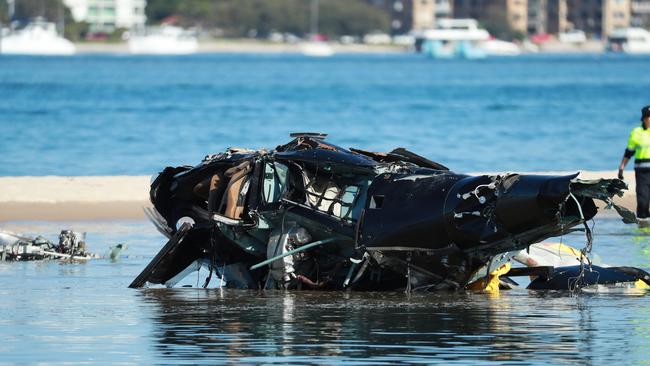
“We have already generated a 3D model of the view from the pilot’s seat from an exemplar EC130 helicopter, which we will use as part of a detailed visibility study to help the investigation determine the impediments both pilots faced in sighting the other helicopter.”
Both helicopters were fitted with a traffic collision avoidance system, but it had not been “fully integrated” and was only providing pilots with auditory alerts.
They had both only been in service for a matter of weeks at the time of the accident.
Mr Mitchell said the full report may not be released for up to two years and that it was important to stress the ATSB is “yet to make findings”.
Air crash experts conducted two months of crucial early investigations, after the accident left four people dead and seriously injured seven others.
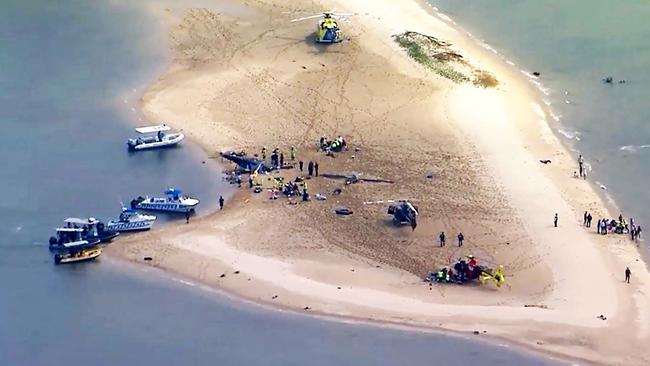
Sea World Helicopters have said it is in possession of the interim report and is taking time and “due care” to review the findings.
Director of Sea World Helicopters John Orr-Campbell said the release of the report is “another reminder of the tragic loss of life suffered that day”.
“All at Sea World Helicopters pay their deepest respect to Vanessa Tadros, Diane and Ron Hughes, our friend and late chief Sea World Helicopters pilot Ash Jenkinson, their families, and those who suffered physically and mentally in the accident,” he said.
“Our special thoughts go to Winnie De Silva and her son Leon, as well Nicholas Tadros, who is still in hospital recovering from his horrific injuries, and his father Simon, who has been by his side all along.”
Originally published as New report reveals critical detail in what caused fatal helicopter crash at Sea World


